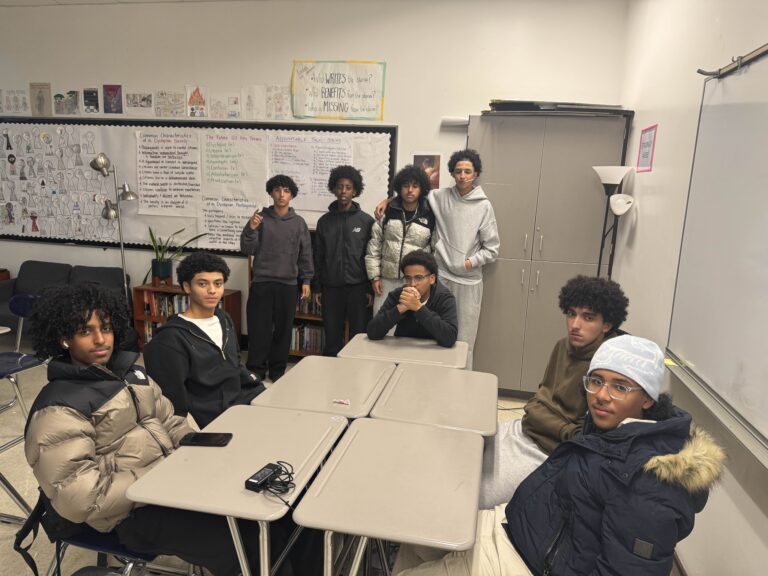By JESSICA LYNN DEPAULA and ANDREW COGLIANO
Imagine being arrested on the false accusations that you were abusing people through Satanic rituals. Crazy, right? In the 1980s, however, America went through a period of anxiety known infamously as “Satanic Panic”. This special type of anxiety stems from the belief that the people around you are essentially Satanists who are abducting people for human sacrifices, prostitution and pornography.
Satanic Panic can be traced all the way back to the infamous 1692 Salem witch trials, in which 20 people were put to death following accusations of witchcraft. Several teenage girls living in the town of Salem, Massachusetts, had exhibited bizarre behavior not considered socially acceptable, such as barking like dogs, dancing inappropriately and falling into inexplicable fits of hysteria; the townspeople, after administering several tests involving recitation of Biblical verses and close examination of birthmarks, concluded that these symptoms were the result of a dangerous spell placed upon the girls by some sort of witch. The trials almost always ended with a violent death sentence given to a poverty-stricken eccentric or outsider to the town, and were not put to a stop until the leader of the colony’s own wife was accused of witchcraft.
Although the satanic panic calmed by the mid-90s, it still rears its ugly head in areas of the country. Like the red scares that frightened 1950s America, the satanic panic of the 80s was a tense time for all.
A prime example of modern Satanic Panic-induced hysteria was seen in the McMartin preschool trial of 1983. The court case spanned seven years until finally being closed in 1990, and by then had become the nation’s longest and most expensive case. The trial started at the McMartin Preschool in Manhattan Beach, California, where concerned mother Judy Johnson complained to the police that her son had been sexually assaulted by his teacher, Ray Buckey. From the beginning, the trial was as normal as a typical sexual assault hearing could be; allegations were made, witnesses were called, doctors were consulted. But three long years into the case, more outlandish allegations were made by Johnson; the case also eventually grew to include 360 children being sexually abused in the day care center, with three additional accused teachers.
Johnson began making strange claims about Buckey himself. She went as far as saying that Buckey could fly, and that he was a witch. Johnson’s lawyer agreed with her, adding that “children would be flushed down the toilet into a secret chamber where they would be molested,” according to court documents. When the children in the preschool were shown photographs of the suspected attackers, one of them identified Chuck Norris.
Over the years, the prosecutors’ arguments suffered tremendous losses as Satanic Panic began to decline. The trial was lost after the district attorney labeled the prosecution’s evidence as “incredibly weak.” Johnson herself died in 1986 due to complications involving her alcoholism, and it was later revealed that she suffered from a form of schizophrenia. After the judge’s decision, the teachers were all acquitted and, in the end, no charges were successfully pressed. The only person to ever spend time in jail was Buckey, which was when he was held before the case even entered the court. After almost 15 million dollars in legal expenses, the court system was exhausted, as was the defense.
Outside the courtroom and the borders of Manhattan Beach, the now-nationally recognized trial ignited mass hysteria in the nation. Other similar cases sprung up in states as far east as Massachusetts, with even crazier claims. In the Fells Acre Day Care Center, located in Malden, a young girl claimed that she was sexually abused by a clown and a robot simultaneously in a hidden room at the daycare center in 1984. She also added that she was forced to watch as her abuser, Gerald Amirault, sacrificed animals in Satan’s name. Much of the coverage of the trial involved heisitation to believe the children interviewed, as well as criticism of the interviews themselves; many people were, and continue to be to this day, convinced that the children were fed information and then instructed to repeat it on camera. It was said that most of the children denied all of the allegations against Amirault and that much of what they said was coerced out of them; one police officer even said that getting any type of information from this particular group of children was “like getting blood from a stone.”
A few years later, in West Memphis, Arkansas, three Boys Scouts, out by themselves in late afternoon, mysteriously went missing. The children’s families went to the police several hours after the boys were supposed to be home, and organized a huge search party of friends, neighbors and police who eventually discovered the bodies of the three children, mutilated and tied with shoelaces, the next morning. The authorities quickly arrested Jessie Misskelley, a mentally disabled local teen, and interrogated him without a parent present for several hours; like the young children involved in the Fells Acres case, Misskelley now appears to have been tricked into implicating not only himself, but two acquaintances of his: Damien Echols and Jason Baldwin, also teens, who were huge fans of the band Metallica who came from poverty-stricken broken homes. The three were brought to trial at once, and due to the recorded statements made, under pressure, by MIsskelley and the heavy metal-inspired appearances of Echols and Baldwin, a jury found them guilty of all three murders. Baldwin and Misskelley were given life in prison without parole; 18-year-old Echols, who was alleged to be the ringleader of the trio, was sentenced to death.
Miraculously, a crew from the Home Box Office (HBO) happened to learn of the trial, and, expecting to be confronted with three cold-blooded killers, were instead met by a typical case of Satanic Panic. The consequent film, Paradise Lost: The Child Murder at Robin Hood Hills, became a national phenomenon, and scores of fans, many of whom had latched onto Echols as a symbol of the feeling of isolation and neglect that many outcast teens and “freaks” experienced, and celebrities including the Dixie Chicks and Johnny Depp brought attention to the case. The West Memphis Three, as they came to be known, were finally released in summer 2012, after agreeing to an Alford Plea.
Satanic Panic died down in the years following the West Memphis case, and in 2005, some of the children, now adults, from the McMartin Preschool case even confessed to making their testimonies up to avoid embarrassment. However, history does have a habit of repeating itself, so it is very likely that another wave of Satanic Panic could come crushing down upon us again.




